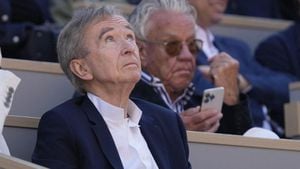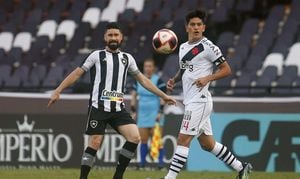North Korean troops have recently escalated their activities and have implemented new tactical approaches during combat operations, particularly noted in Kursk Oblast, Russia. This development has seen changes in infantry tactics and the introduction of mobile missile systems, namely the Bulsae-4, aimed at inflicting damage on Ukrainian military assets.
Reports from 24 Kanal, based on information from Forbes, confirm this uptick, highlighting the Korean People's Army (KPA) and its sustained engagement as part of the Russian efforts against Ukraine. The utilization of Bulsae-4 missile systems marks a strategic shift for the North Koreans, indicating their commitment to support Russian military operations amid the turmoil.
Deepening the narrative, the situation became more convoluted with two elite North Korean soldiers, Li and Baek, who were captured by Ukrainian forces and granted their first extensive interview to Chosun Ilbo. Their accounts revealed how they had been sent under the guise of participating in training, only to find themselves directly involved on the frontlines. "We were sent to Russia under the pretense of learning, but ended up on the front lines, witnessing our comrades perish," recounted Li, elaborately expressing their shock at the conflict.
Both soldiers detailed their pre-deployment preparations, which included rigorous physical and ideological training. Li shared his experience, stating, "Our training included not only physical endurance but was also ideologically intense, as if our lives depended on it." This assertion reflects the high stakes and expectations placed on them by their military command.
The operational changes adopted by North Korean troops on the battlefield are noteworthy as they have shifted from large-scale infantry formations traditionally comprising 100-200 soldiers to smaller, more agile units of about 10-15 soldiers. This strategic modification allows them to maneuver cautiously, minimizing visibility to Ukrainian drones and artillery. Lieutenant Stanislav Krasnov from the Ukrainian forces noted, "North Koreans attack in smaller, more cautious groups now, adjusting their tactics to deal with Ukrainian defenses effectively." This adaptation showcases the KPA’s capability to learn and strategize under intense combat conditions.
While both Ukrainian and North Korean forces report losses, the shifting tactics of North Korea’s military have led to significant casualties. Estimates suggest the 11th Army Corps of North Korea has lost over one-third of its personnel due to previous conflicts. The adoption of these complex tactics, moving smaller units over great distances without heavy equipment, also highlights the intensity and challenges on the frontlines.
Despite these challenges, North Korea continues to provide significant artillery and missile support to Russia, indicating strong military cooperation between the two nations. This aspect has been underscored by reports reaffirming the losses on both sides: Ukrainian units have also seen substantial losses, highlighting the immense cost of this protracted engagement.
The interviews with Li and Baek present chilling insights; they spoke candidly about how the perception of warfare was manipulated. Their descriptions of prior preparations, isolation during combat, and the harsh realities faced once on the battlefield contributed to the broader narrative of military deception employed by the North Korean government.
Further elucidation from military analysts indicates these overseas operations are likely part of North Korea’s broader strategy to regain relevance on the international stage. The operational reports detail the various stages of participation and how North Korea has swiftly adapted its combat techniques to fit the continuously changing war dynamics.
Higher casualty figures from both North Korean and Russian side highlight the war's brutal nature, with estimates placing the losses for Ukrainian forces at about 400 units of equipment and hundreds of personnel. The adapting strategies reflect broader lessons learned during the conflict whilst emphasizing the dire conditions faced by soldiers on the front lines.
This evolution of tactics among North Korean troops and their notable deployments raises pressing questions about future engagements between Ukrainian and North Korean forces, particularly as the war shows little signs of resolution. The strategic interplay between North Koreans and Russians, alongside these altering battlefield tactics, suggests a complex and precarious path forward for all involved.



